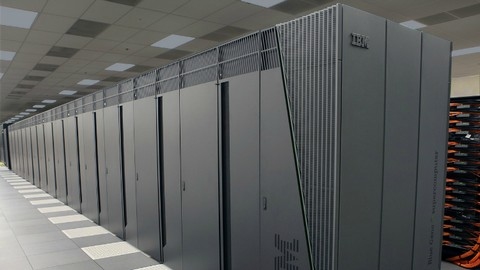COBOL, or Common Business-Oriented Language, is a high-level programming language that has been a cornerstone of business applications for decades.
Its robust nature, focus on data processing, and ability to handle large volumes of transactions have made it essential in industries like finance, government, and healthcare.
Learning COBOL can open doors to a unique and in-demand career path, especially in maintaining and modernizing legacy systems that still power critical operations in many organizations.
However, finding a comprehensive and engaging COBOL course that caters to your learning style and experience level can be challenging.
You’re likely seeking a course that not only covers the fundamentals but also delves into advanced concepts and provides practical experience with real-world applications.
You might be overwhelmed by the sheer number of courses available and unsure which one best suits your needs.
Based on our research and analysis, Mainframe: The Complete COBOL Course From Beginner To Expert on Udemy stands out as the best COBOL course overall.
This comprehensive program takes you from novice to proficient COBOL programmer, covering everything from basic syntax to advanced topics like DB2 integration and mainframe interaction.
It’s an excellent choice for both beginners with no prior programming experience and those looking to expand their existing skillset.
While this is our top pick, we understand that you might have specific preferences or requirements.
That’s why we’ve curated a list of other excellent COBOL courses, catering to different learning styles, skill levels, and areas of focus.
So, continue reading to explore more options and find the perfect COBOL course to embark on your learning journey.
Mainframe: The Complete COBOL Course From Beginner To Expert
Provider: Udemy
This comprehensive course takes you from COBOL novice to proficient programmer.
You begin with COBOL fundamentals, exploring its history, syntax, and program structure.
You then discover how to connect to a mainframe from your computer using tools like TSO and ISPF, essential for interacting with mainframe systems like MVS.
You’ll master basic mainframe commands and learn to create datasets for storing your COBOL programs.
The course then guides you through COBOL programming essentials, including defining variables, using data types, and understanding the importance of levels in COBOL programs.
You’ll gain confidence in performing arithmetic operations within your code, including ADD, SUBTRACT, MULTIPLY, DIVIDE, and the versatile COMPUTE verb.
You’ll move on to implement decision-making structures and loops in your programs, mastering IF-ELSE, EVALUATE, and PERFORM statements.
You’ll then learn how to define and manipulate tables (arrays) in COBOL, including searching for specific data using powerful techniques like SEARCH and SEARCH-ALL.
The course also covers string handling functions like STRING, UNSTRING, and INSPECT, enabling you to effectively work with text data.
You’ll dive into inter-program communication using the CALL statement and explore different methods of passing control between programs.
You’ll become proficient in file handling techniques, learning to work with various file types such as sequential, relative, and indexed files.
The course delves into the internal representation of data in COBOL, explaining different usage clauses and their impact on data storage and manipulation.
Finally, you’ll explore advanced topics like using the Hercules emulator to simulate a mainframe environment on your computer.
The course culminates with an introduction to COBOL DB2 programming, teaching you how to interact with databases using SQL within your COBOL programs, a valuable skill for working with enterprise data.
IBM Mainframe Developer Professional Certificate
Provider: Coursera
If you are looking to understand the world of mainframes and COBOL programming, the IBM Mainframe Developer Professional Certificate on Coursera is a great fit.
You’ll begin by learning about enterprise computing and the importance of IBM Z mainframes in powering business transactions.
You’ll understand the architecture, operating system (z/OS), security features, and how this technology enables critical functions.
The program then introduces you to COBOL, a programming language still used in many businesses.
You’ll start with the basics, like handling numbers and symbols, editing, understanding procedures, and the structure of a COBOL program.
As you gain confidence, you’ll explore more advanced features of COBOL, like handling tables, using switches, numeric usage, and structured COBOL programming techniques.
You will then discover the software development process specifically for COBOL, learning best practices, how to work with existing code, and the principles of quality assurance.
You’ll delve into technical support and project management, getting a feel for real-world COBOL development.
The program also covers important aspects of data and file management within COBOL, including how to work with relational databases in a mainframe environment.
Finally, you’ll gain experience in testing and debugging COBOL code.
You’ll learn about common COBOL errors, how to interpret file status codes, and how to effectively debug your code to ensure accuracy and efficiency.
Mainframe: Code DB2 on COBOL Programs for Absolute Beginners
Provider: Udemy
This Udemy course will take you on a journey from being a complete beginner to understanding and writing COBOL programs that interact with DB2 databases.
You begin by learning about DB2 itself, exploring its hierarchical structure, various data types, and the essential SQL operations.
These operations, categorized as DDL and DML, become your tools to create tables, modify their structures, and manage the data within them.
Imagine building a house: you learn to lay the foundation (create tables with DDL), build walls and windows (define data types and structures), and finally, furnish it (manage data with DML).
You then dive into the world of COBOL programming, learning how to write code that directly communicates with your DB2 database.
You discover how to use JCL, a scripting language, to control the execution of your programs on the mainframe.
The course goes beyond theory by providing hands-on coding exercises that solidify your understanding.
You tackle real-world examples, learning to handle common challenges such as missing data values and processing multiple data records efficiently.
The journey culminates in a capstone project, where you design and build a complete COBOL DB2 program from scratch.
This project serves as a practical test of your newly acquired skills, allowing you to apply what you’ve learned to a realistic scenario.
COBOL Programming with VSCode
Provider: Coursera
You’ll start by setting up VSCode, a popular code editor, and learn how to use it for COBOL programming.
You learn about COBOL’s syntax, the rules of writing code, and how to structure your programs using divisions like Identification, Environment, Data, and Procedure.
The course then delves into the core components of COBOL, such as variables, data types, and file handling techniques.
You discover how to work with files, create reports, and use conditional expressions and arithmetic operations to control your program’s flow.
You also become familiar with intrinsic functions, pre-built blocks of code that make programming more efficient.
Through hands-on lab exercises, you get practical experience applying these concepts.
These labs simulate real-world scenarios and allow you to solidify your understanding of COBOL programming.
You will build your skills step-by-step, guided by detailed instructions and explanations, and emerge with a solid foundation in COBOL, ready to tackle real-world applications.
Mainframe COBOL Developer Training By Anil Polsani
Provider: Udemy
You will start by learning about the mainframe environment, including key elements like Z/OS, TSO, JCL, and ISPF.
These elements are the foundation of mainframe computing.
You will then learn how to write COBOL programs.
You will start with basic concepts like declaring variables and using statements like ACCEPT, DISPLAY, and COMPUTE.
As you progress, you will learn how to use conditional statements like IF and PERFORM to create more complex programs.
The course also covers file handling in COBOL, teaching you how to manage data using COPYBOOKs and JCL.
You will then learn more advanced COBOL topics, such as working with subprograms using the CALL statement, manipulating strings, and using techniques for data security and memory optimization.
You’ll also discover how to handle data efficiently using the REDEFINES clause and how to implement lookup logic with the OCCURS clause.
Mainframe - COBOL DB2 - Basic to Advance Level
Provider: Udemy
This course equips you with the essential skills needed to excel in mainframe development using COBOL and DB2.
You begin your journey by diving into the fundamentals of DB2, exploring its architecture, object hierarchy, and the crucial roles of developers and DBAs.
You quickly transition into the world of SQL, mastering the art of writing queries to interact with DB2 databases.
You become proficient in using QMF to create, alter, and delete tables, building a strong foundation in database management.
The course then seamlessly guides you into the world of COBOL-DB2 application programming.
You discover how to write COBOL programs that interact with DB2, mastering concepts like host variables, DCLGEN, and the SQLCA.
You learn to write SQL queries directly within your COBOL programs, allowing you to manipulate data stored in DB2 tables.
You delve into advanced DB2 concepts such as cursors, gaining control over data retrieval and manipulation within your programs.
You also explore practical SQL techniques using SPUFI, mastering operations like creating tables, inserting data, executing various types of JOINs, working with subqueries, and using aggregate functions.
You learn how to implement and manage RI to ensure data consistency across your databases.
Finally, you uncover the intricacies of the COBOL-DB2 compilation process.
You become familiar with precompilation, compilation, link editing, and the process of creating efficient DB2 plans using BIND.
The course explains various BIND parameters such as CS, RR, and UR, empowering you to fine-tune your program’s performance.
You finish the course with a comprehensive understanding of how COBOL and DB2 interact to build robust mainframe applications.
Also check our posts on:






